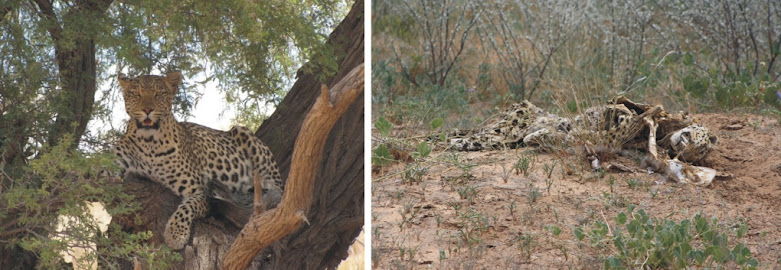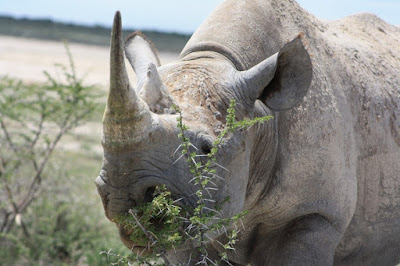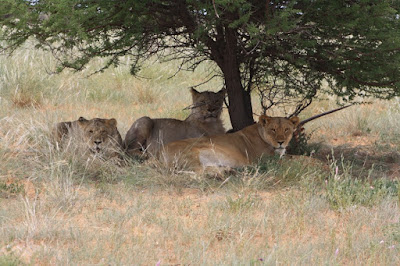PART 3 – Etosha National Park
As already described in PART 2 of our tour, we entered the national park through the Andersson Gate, paid our permits and confirmed the accommodations, which of course we had already booked in advance.
Also right next to the Halali camp there is another, smaller granite hill, from which you can watch an artificial water hole day and night.
<< Etosha viewpoint - on a peninsula.
A little later, in the 1860s, groups of “Dorsland Trekkers” (thirstland trekkers) coming from the Transvaal passed accross and alongside the salt pans on their way towards Angola. In 1876 the American traveling salesman Gerald McKiernan traveled through the Namib and reached the Etosha Pan, where he discovered fresh water springs around Okaukuejo.
As a browser, the Black Rhinoceros feed mainly on leaves, small branches, twigs and bark. In contrary to the White Rhinoceros, it only feeds on grass in exceptional cases. In the Etosha National Park, the various acacia species are the main source of nutrition.
The black rhinoceros prefers to stay well covered in the dense bush and lives mainly crepuscular and nocturnal.
White Rhinos are only found locally in Etosha National Park, because only during the rainy season, larger areas of grassland can be found.
Tomorrow morning we will ride one more lap towards the Klein-Namutoni waterhole and around the famous Dik-Dik Drive.
After that we will continue via Tsumeb and Grootfontein towards Rundu ... - on the Okavango. The opposite bank already belongs to Angola.
 |
| Fort Namutoni: The view from the observation tower in the evening and a view of the fort in the early morning. |
In this blog, we not only describe the tour
itself and what we experienced. We also want to report on aspects of nature
conservation, the history of the creation of the national parks and current
events in connection with it. The present geology of the respective landscapes
and their geological history also play an important role.
Klar – wir können in diesem Rahmen nicht alles ausführlich behandeln.
Sure - we cannot deal detailed with everything in this context. Therefore my request: Write in the comment column, your personal questions, which topics you are particularly interested in and what we should write more about.
We have
also dedicated two pages to these topics on our website - namely:
- nature
conservation and hunting .... >>>
-
.... as well as nature conservation and tourism ... >>>
Current travel offers - for self-drivers as
well as guided tours
- can be found on our website: www.paarl-safari.de
- or you send us an e-mail to: info@paarl-safari.de






Keine Kommentare:
Kommentar veröffentlichen